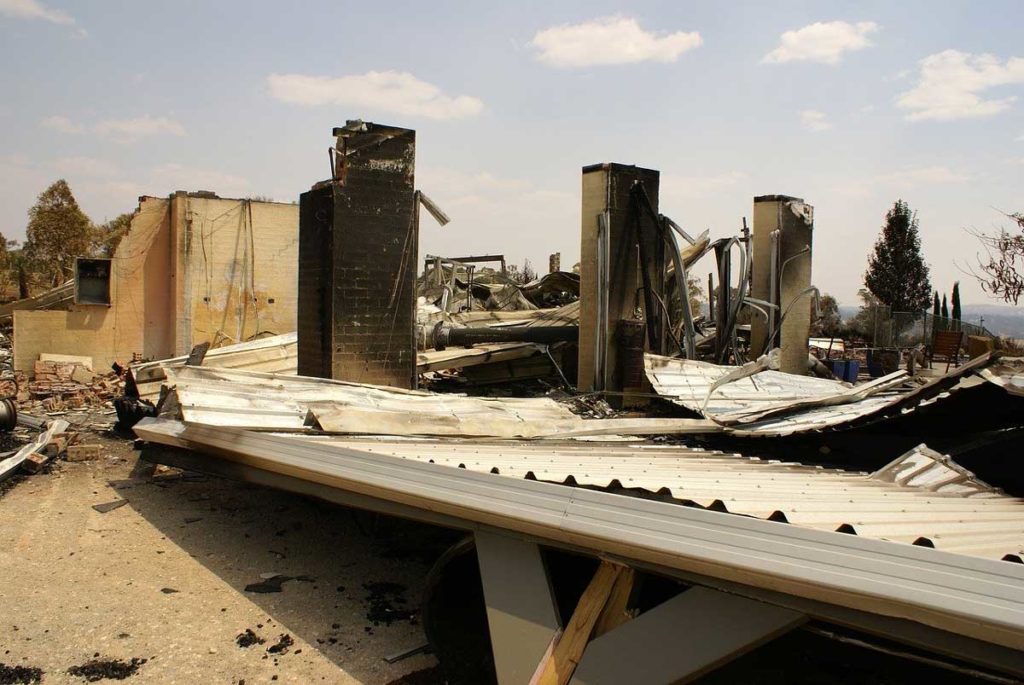
Spring bushfires in suburban areas of the Sunshine Coast in QLD, are a grave reminder that you don’t have to live in a rural area to be impacted by bushfires. The ferocity of these fires in early September, followed by horrific November blazes across NSW, QLD, SA and VIC has seen a devastating start to the Australian bushfire season. With lives lost and hundreds of homes razed, bushfire preparation has never been more important.
GET THE LATEST STRATA NEWS / ARTICLES DIRECT TO YOUR INBOX HERESevere and extended drought has seen large parts of Australia suffer exceptionally dry conditions, setting the scene for widespread, and severe bushfire threats as we approach the hotter summer months. With more rural areas being redeveloped into suburban communities, and city fringe living ever-growing, thorough preparation is key to staying safe this summer.
To assist in preparing your Strata property for the bushfire season, we have set out some helpful tips to ensure you are in the best position possible, should you face the threat of a bushfire.
Preparing for the bushfire season
- Ensure your Sums Insured are adequate
If your strata property was damaged beyond repair in a bushfire, is the Building Sum Insured sufficient to fully reinstate it? Every summer carries with it an inherent bushfire risk, therefore having Sums Insured that adequately protect your property assets in a bushfire is crucial.
To help avoid a significant financial loss:
- Ensure your strata building is insured for the full replacement and reinstatement value, and
- Check that your personal contents Sums Insured are up-to-date.
- Bushfire Prone Areas (BPAs): Understand how insurance is impacted by building standards
In the wake of the 2009 Black Saturday fires, the Australian Government implemented updated rules and regulations for new constructions in BPAs (as part of AS3959). The regulations set out strict new standards and construction material guidelines to help buildings have a better chance of surviving certain bushfire attack levels.
What does this mean for strata property owners?
- Check your level of Insurance! Given the changes, it is highly likely for older strata buildings in BPAs to be underinsured. This is due to the increased cost of reconstruction associated with materials that comply with new regulations. If you reside in a BPA and are concerned about your level of strata building insurance, contact Whitbread for further information and advice.
- Retrofit older strata properties to minimise the chance of a loss To minimise the risk of damage, the Victorian Building Authority recommends that owners of older dwellings engage the services of a registered building practitioner to discuss retrofitting the property. While retrofitting isn’t mandatory, it can help prevent a total loss in the event of a bushfire. For more information on retrofitting a building in a BPA, consult your local state fire or building authority.
- Keep the strata property tidy
Dry vegetation and waste around a strata property can act as fuel in a fire. A small spark or ember that ignites a pile of leaf litter, can fast transform into a dangerous blaze, or even create an additional fire front during a bushfire.
Tips to prevent spot fires:
- Remove leaves and twigs from roof gutters
- Cut grass to a length less than 10cm
- Clean up dead branches, leaves, and grass clippings from lawns and garden beds
- Ensure all dry materials have been properly disposed of
- Store any flammable fuels away from the strata building
- Have a bushfire plan!
Your strata property does not need to be located in a rural area to be at risk from a bushfire. The start of the 2019 bushfire season is strong evidence of this. Ember attacks can occur kilometres ahead of a fire front. Whether the property is in the vicinity of bushland, a forest, grassland or coastal scrub, all at-risk strata properties should have a clear bushfire plan.
A thorough bushfire plan can help you establish clarity on:
- When to leave
- Where to evacuate to
- What to take with you in the event of an evacuation.
- Stay informed and act accordingly
Throughout the bushfire season, the Bureau of Meteorology (BoM) consults with state fire authorities Australia-wide, publishing danger ratings designed to inform the community of potential fire hazards each day in their local area. This is something you can check throughout the summer. This system consists of two metrics:
Fire Danger Rating (FDR)
This rates the prediction of fire behaviour, including how hard it would be to extinguish a fire once it starts.
The rating provides information on the type of bushfire that could be experienced on that day, including the type of threat it presents to life and property (on a scale from Low-Moderate to Code Red).
Fire Danger Index (FDI)
This metric measures the likelihood of a fire starting. It incorporates factors such as the dryness of vegetation, temperature, wind speed, and the probability of certain weather conditions such as lightning.
Regardless of whether your strata property is in, or on the outskirts of an ‘at-risk area’, this index is important to ensure you:
- Understand the different types of fire ratings,
- Regularly check with your local fire authority for updates,
- Are prepared to evacuate in the event of an emergency.
Australia-wide Metro & Country Fire Authorities
Click links below to be taken through to the relevant fire authority website.
- ACT metro: click here
- ACT rural: click here
- NSW metro: click here
- NSW rural: click here
- NT entire state: click here
- QLD metro: click here
- QLD rural: click here
- TAS entire state: click here
- VIC metro: click here
- VIC rural: click here
- WA entire state: click here
Have a question about bushfire safety at your scheme or something to add to the article? Leave a comment below.
EmbedRead next:
If you are concerned about the level of Strata Insurance cover for your property, contact your Strata Manager, or for specialist insurance advice: Lidia Siljanoski Whitbread Insurance Brokers T: 1300 424 627 E: info@whitbread.com.au
This insight article is not intended to be personal advice and you should not rely on it as a substitute for any form of personal advice. Please contact Whitbread Associates Pty Ltd ABN 69 005 490 228 Licence Number: 229092 trading as Whitbread Insurance Brokers for further information or refer to our website.
This post appears in Strata News #307.
This article has been republished with permission from the author and first appeared on the Whitbread Insurance Brokers website.
Visit Strata Insurance, Maintenance and Common Property OR Strata Topics by State pages.
After a free PDF of this article? Log into your existing LookUpStrata Account to download the printable file. Not a member? Simple – join for free on our Registration page.
